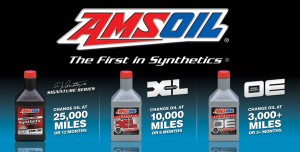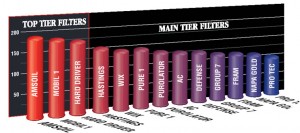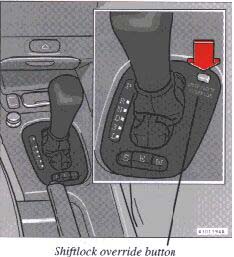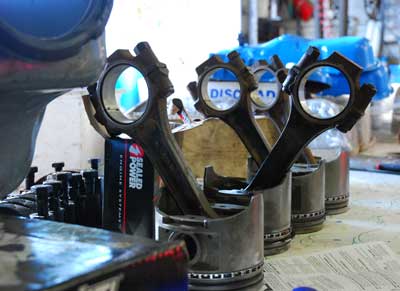The car business has become like the computer business – things change fast. Models change – radically – every four years (and sometimes every three) rather than once every eight (or ten) as they used to back in the ’90s and before. Features undreamed of or found heretofore only in very expensive/exotic cars (touchscreen displays, seat heaters, panorama sunroofs) are now as common as floor mats. What else has changed? And what else should you “hip” yourself to? Here are a few to chew on:
* For the first time ever, it may make more sense to lease – that is, to rent – rather than to buy.
Part of the reason for this is that the cost to buy is too high (for a growing number of people) and the car companies have had to resort to extreme measures to keep inventory from stacking up on dealers’ lots. Example: Very recently, GM would rent you a Volt electric car for just $200 a month. For the simple reason that very few people were buying $34,000 (to start) Volts. You do the math. How much would it cost you to chew down $34,000 over say six years vs. just renting the thing for $200 a month?
The principle applies generally. Take a look. See what’s available. It may well be that it makes more sense to rent rather than to buy. You’ll have a lower monthly payment; no worries about repairs (and possibly, maintenance; some contracts include routine maintenance as part of the deal). Drive a new vehicle more often.
Of course, you’ll also always have that monthly payment (rent).
* A high-end oil change could save you money and will definitely save you hassle.
You’ve probably heard about extended oil change intervals – as long as 10,000 miles or more (vs. the previous once every three-four months and 3,000 miles). Part of the reason for the increase has to do with the way modern engines are designed – and run. They’re built to closer tolerances for one and for two, they burn fuel very precisely. Much less of it ends up (unburned) in the oil, so the oil lasts longer.
Another big factor is the type of oil (and filter) you use. A non-synthetic “good quality” oil that meets basic specifications and filters will usually require more frequent changeouts; typically on the lower end of the manufacturer of your vehicle’s recommended intervals. It’s not the oil (or filters) are “bad.” They just aren’t designed to maintain their protection as long as high-end oil and filters. So, if you go with (to name names) a good but basic mineral oil such as Pennzoil and a Fram oil filter, you may need to change them out once or twice a year (or when you hit say 6,000 miles or so; read the service recommendations for your specific vehicle for exact time/mileage intervals). But if you go with a high-end oil (Amsoil, for instance) and filter (Wix, K&N) you may be able to safely extend the changeout interval to 10,000 miles – maybe even 15,000 miles.
So, you’ll deal with oil and filter changes less often – and your engine will enjoy the benefits of superior protection, especially at extremes of cold and heat – which ought to increase engine longevity as well as performance and economy.
Of course, the up-front costs (of the high-end oil and filters) will be higher. The best synthetic oils (such as Amsoil) typically cost about 30-40 percent more than a good quality standard mineral oil.
* LED lights – very popular features now offered (or standard) on many new cars – provide enhanced illumination but look out when it comes time to replace them.
“LED,” of course, is the acronym for Light Emitting Diode. The car companies are using them as styling accents; as “surrounds,” for example, around the car’s headlights or brake lights or even as the car’s primary head (and brake) lighting. They look nice – and they increase the car’s visual footprint, making it easier for others to see as well as for you to see. But replacement costs can be just as luminous.
Typically there are half a dozen or more LEDS in series rather than (as in the past) a single bulb providing the illumination. Each LED might cost $20 (or a lot more than that). When one goes, the others are probably not too far behind. Instead of replacing just one bulb, as was once the rule, you may be looking at replacing dozens of them. The six to twelve around each headlight; each brake light. Then the other bunch of them in the “third eye” center high mounted (CHMSL) brake light.
You don’t even want to know what it’ll cost you if you bump into something at the supermarket paring lot and crack/break the plastic housings these things are mounted in.
* Unjamming a locked-up gear selector:
More and more cars are “drive by wire” – which means that the accelerator, brake pedal and gear selector (automatic-equipped cars) do not connect to components via mechanical cables. Instead, they transmit inputs electronically – hence the term “drive by wire.” A fairly common problem that crops up is that – for one reason or another – the computer locks the automatic transmission gear selector in Park. Tug on it all you like, it’ll break before it moves out of Park.
Time to call the truck? Maybe, but before you do, look around the base of the gear selector. There should be what looks like a little cut-out or tab. Underneath this will be a release button. Push it and the gear selector should now move normally and the car ought to be drivable. It may not drive normally (when this happened to me recently – brand-new press car – it would not shift out of first gear and I had to limp the car home that way) but at least you won’t be stranded, possibly in a not-safe place.
PS: If you don’t see a cut-out or tab, try to pop up the trim plate around the shifter lever. This was the case in the press car I mentioned above. Then look for the release button. It will typically be a yellow button and very obvious.
If you value independent media, please support independent media. We depend on you to keep the wheels turning!
Our donate button is here.
If you prefer to avoid PayPal, our mailing address is:
EPautos
721 Hummingbird Lane SE
Copper Hill, VA 24079
PS: EPautos stickers are free to those who sign up for a $5 or more monthly recurring donation to support EPautos, or for a one-time donation of $10 or more. (Please be sure to tell us you want a sticker – and also, provide an address, so we know where to mail the thing!)











Hey Eric, Don’t know if you saw this. Some more ammo for your argument about technology being used to make cars more “idiot proof”, and the failure of such.
http://www.washingtonpost.com/news/morning-mix/wp/2015/03/31/driver-follows-gps-off-demolished-bridge-killing-wife-police-say/
Sad to say once again this happened in my neck of the woods. This bridge has been out for over five years, but yet GPS still routes people over it…….. This clover would have driven around a number of barriers before driving off the edge of the bridge, killing his own wife.
I call it building a better idiot.
More idiots need more intervention. More intervention makes more idiots.
Anyone out remember Xenon HID headlights? Whatever happened to those? They were really popular on luxury cars in the 90s and early 2000s. Weren’t they outlawed in some places?
Hi Bryce,
IIRC, there were some complaints about glare. The issue seems to have been dealt with though. One thing I will say in praise of almost any new car is that the lighting systems are epically/geometrically superior to what was common before the mid-1990s.
My ’76 TA, for example. Even with halogen aftermarket sealed beam headlights, the forward visibility at night is absolute scheisse compared with any new car’s.
Need the ECE lamps and then run relays and heavier gauge wire.
http://www.danielsternlighting.com/products/products.html
My ’68 Olds came with its original “T-3” headlights…I kept these bulbs for posterity and switched to halogens because I experienced sehr schlecht nighttime visibility.
Porsche Museum, Stuttgart-Zuffenhausen
Porsche cars and Porsche developed cars built by other carmakers. Dr. HC Ferdinand Porsche started as a hired hand, then founded his own developing firm, and after WWII also started to build his own cars.
They still make development for third parties. The Porsche numbers are the Development Commission Numbers, so the missing numbers are on the road under other brands, often as engines.
Porsche 1934 Family Beetle NSU 32
NSU 32
NSU 32
On 15 December 1945, Ferdinand Porsche was arrested for war crimes, but not tried.
During his 20-month imprisonment, Ferdinand Porsche’s son, Ferry Porsche, decided to build his own car, because he could not find an existing one that he wanted to buy. He also had to steer the company through some of its most difficult days until his father’s release in August 1947.
Please pardon my ignorance. I have an 89 Toyota Corolla. Would it do better with these suggested synthetics?
BTW, always enjoy reading your stuff, Eric. I am a girl and realize this is a pretty guy-ee site, but it is one of my favorites. Can’t help it.
Hi PJ,
Synthetics are a good call generally. If you live in a cold climate, you’ll definitely notice easier starts (and faster warm-ups) and your mileage should uptick, too. In summer, synthetics will help your engine run cooler – and they’ll provide added protection, too.
Well worth it in my opinion.
PS: Glad to know there are some girls out there reading this stuff!
I am 71 years old and still drive a little. Also I was a mechanic too. The sophistication I don’t think is needed if the thought in designing changes. The tools I brought with me on a road call where a car wouldn’t start was a long screwdriver, a pair of plyers and booster cables for a dead battery. (and a good pair of ears too). And what happened to the regular light bulb? Cheap to fix today at $2.50 hugh?
WE NEED A NEW V-W BEETLE!
Maybe I’m the only one who thinks this way, but the LED strings and bars on cars look really cheesy, like the LEDs in kids’ sneakers or in their toys. They look like cheap add-ons whose only purpose is glitz.
Synthetic oils are probably all that they’re cracked up to be, but an advantage to mineral oil and changing it more often is that corrosives, gunk, and moisture also get thrown out more often. The oil itself in synthetics might last longer, but the crap it accumulates that no filter can remove will do just that much more damage in 10,000 miles than it would in, say, 3000 (the oil change interval for all my old beaters).
I changed the oil some 65-70 times on my old Geo Metro until it finally burned a middle exhaust valve (a common problem it seems) around 215,000 miles. Rust and my reckless teenaged son have taken some of my cars over the years, but the only engine I’ve ever lost at a relatively low mileage (circa 150,000) belonged to a Ford pickup that I named the Anti-Christ.
Hi Ross,
Yeah, me too. I think they’ve gone over to LEDs because – what else can they do? Government mandates have so constricted what they can do in terms of styling the car that such gewgaws are, increasingly, the only thing left they can do to add some flair to the car’s looks.
Eric, it has a lot to do with current draw. With so many electrical systems there can be quite the drag from the alternator. Even that is controlled by the PCM to only charge on demand. All in the name of mileage.
I always wondered about these new automobiles with LED lamps. This great article confirms my suspicion that it is expensive to replace them. I like the simplicity of my Ford Ranger. Much cheaper to replace the bulbs on it. I think in the 10+ years that I have had it, I really haven’t replaced that many bulbs either. I just recently replaced the halogen fog lamp bulbs, because one burned out. Since one had burned out, I just went to NAPA and replaced both. I remember I had to replace a tail lamp assembly, because somehow I had managed to shatter one, but that was a cheap fix at NAPA. The LED lamps are nice because they illuminate well, but it just seems like the cost is not worth it. But alas, car companies keep pushing LED on us.
For a lot of headlamps with LED strips as daytime running lights (DRLs), the news gets even worse. Typically, burned-out LEDs aren’t individually replaceable, and the strip is built into the headlamp assembly. You guessed it: this means you get to replace the entire headlamp assembly if LED DRL elements are burned out, at, say, $1K a pop. Ditto for taillamps. I’ve seen new cars with banks of red LEDs for the taillamp assemblies with single elements burned out. Looks bad in a car just driven off a dealer lot.
Many LEDs are made (too) cheaply in China, which doesn’t help matters, as I’ve noticed with cheap flashlights using nine of them. Invariably after a short time one or more elements quit working. Some automakers, especially the Korean ones, are getting their automotive LEDs from…guess where…
In fact, based on info in the more recent editions of the Bosch Automotive Handbook, European regulations seem to mandate replacing the assembly rather than an individual LED.
Using a normal halogen bulb at reduced brightness for the ubiquitous DRLs makes more sense, especially for economy cars. But why have DRLs at all? Unfortunately, the US is the last major industrialized country left not mandating them, so every car line sold here now has them because of regulations everywhere else…
Why do you want DRLs?
And why should they be mandatory…?
Let me make it clear: I don’t want DRLs. It seems unlikely that they really enhance safety in any meaningful way during daytime in most conditions, and if the weather is bad, most people will turn on their lights anyway. But because every other major country has mandated DRLs, the US is now stuck with them.
I blame GM for DRLs.
It was GM – touting “safety” but really to make more money – that force-fed them to the U.S. by making them standard in all models. Previously, GM only installed DRLs in cars made in/bound for Canada – where DRLs were (and are) required by law. And did not install them in cars made in/bound for the U.S.
GM had such a huge market share that it set the ball in motion.
GM purchased a DRL company and was looking for a competitive advantage when they tried to make DRLs required in the USA.
Ah, thank you for clarifying. 🙂
Goes back to my rant on another page, that “they” are just testing pieces of a “final solution” and will eventually unify all the effective ideas into one global surveillance net (thinking it will look like a cross between Judge Dredd’s world, and the Earth of Elysium).
Implanted RFID IDs in use by a Swedish corporation; Biometric iris scans overseas in Afghanistan and Iraq; biometric-based REAL ID here in the US; Cell phones with always-in, always-on GPS, long-range biometric ID scans in the US, and light-based thought manipulation (certain wavelengths affect behavior in rats in the US, so far – expect it to be part of our world going forward, like the subliminal messages that used to be in films), and now “smart” pills for birth control, and medicine delivery, and I’d guess diabetes shortly, too…
And in the US, it’s been decided we don’t own our bodies, The State does.
The recent ammo flap about m855 ball ammo for the AR-15 platform? That was from a public review of a “rules interpretation change,” if I understood things correctly. Now it’s “put off for future study,” but there was a recent Supreme Court decision (just before BATFE dropped the M855 ban) that it’s not necessary to publish “rules interpretation changes” for public review. Instead, they can just ENACT the changes now… which means the M855 issue, AND ANY OTHER AMMO BAN, is moot: there are rounds already banned under the same logic, and the M855 (and any center-fire rifle cartridge) is just the latest target – but ANY round can be banned this way, it’s just an “administrative change” here.
DRLs would just be another indicator of our “tags,” ultimately, and an intentional cost increase, to ultimately make car ownership too onerous for any but “the rich” – and even then, it will become the Corporation who owns the car, and the driver – and the VIPs will be chaufferred around, while the costs will ultimately be borne by US again. (Higher prices for what consumer goods are actually created; when the wealth doesn’t exist, people don’t buy – the ultimate plan being, reduce us back to peasants, tied to the job instead of the land. Food prices are up again; gas may go back up, given the wars in place to prevent Russian fuel shipments, and disrupt petroleum from the middle east… combined with the nuclear power plant ban here, and the “environmental” prohibitions on drilling for oil where we KNOW oil exists here… )
Control, control, control.
“… / kill is such a friendly word / seems the only way – of reaching out again…” -Metallica, Sanitarium
Need to preserve the human spirit. Cities are unnatural (best, most concise explanations are Batman’s notes, and Rorschach’s comments: Rorschach’s Journal. October 12th, 1985: Dog carcass in alley this morning, tire tread on burst stomach. This city is afraid of me. I have seen its true face. The streets are extended gutters and the gutters are full of blood and when the drains finally scab over, all the vermin will drown. The accumulated filth of all their sex and murder will foam up about their waists and all the whores and politicians will look up and shout “Save us!”… and I’ll whisper “no.” ” and “You see, Doctor, God didn’t kill that little girl. Fate didn’t butcher her and destiny didn’t feed her to those dogs. If God saw what any of us did that night he didn’t seem to mind. From then on I knew… God doesn’t make the world this way. We do.” Batman’s was basically something to the effect of, all cities are self-destructive. The alleyways, the dark corners, the filth, the decay – it rots out those who are trying to be decent, destroys the fabric of civilization, and enables the parasite classes (including ourtight criminals).
Fourth turning, perhaps?
I have been using LubroMoly 10/40w synthetic oil with molybdenum for years now in all of my cars, and wow what a difference! A ’94 Ford F150 I once had with a 300cid straight six went from ~15mpg to ~18mpg, with a huge increase in power. (Of course those engines have more built in drag than a VIP party at Bohemian Grove; YMMV.)
I recently picked up an older Mercedes with a straight six that used to have tappet noise at cold startup and is now whisper quiet, and got a 1-2mpg boost with this oil. Can’t say enough good things about it.
Just replaced the original halogen headlight bulbs on the 2004 Grand Caravan
$26 out the door for a two-pack of the mid-range Sylvania bulb.
Yup!
One of the reasons I like my old Poncho. Fixed glass “one piece” headlights. They were generic back then. Today, designers are so constrained as far as how the body of the car can look (due to the homogenizing effect of government “safety” mandates) that they try to impart some brand identity/visual distinction via elaborate plastic headlight assemblies and LED lights.
I came across an old round “sealed beam” headlight in my garage recently, still in the box with the price tag still attached – $1.00 ! Can’t allow that kind of affordability today.
I had terrible luck with ‘sealed beam’ lights on my previous vehicles – IIRC they’d last only 3-4 years.
Which why I was pleasantly surprised by the original bulbs lasting over 11 years in the Grand Caravan.
Leasing has become an automotive Rent A Center for the swelling population of have-nots. This is a sure sign that the neighborhood is going downhill.
The ‘hidden’ downer in leasing is for folks like me that drive 25k+ miles/yr. rather than the 10-12k allowed in a common lease. You either negotiate a higher lease payment based on your expected mileage, or you get socked with a big balloon payment at termination.
PtB, I know a couple people who can’t even speak of their leased pickup without reliving the nightmare of what it cost when they turned them back. Both trucks were used to work so they required all sorts of body work on the INSIDE of the bed and for the most part, had to be repainted on the outside too.
Something else about the LEDs — if you have a state inspection, they may count your lights as “failing” if there’s one of them burned out. Even if there’s 20 or more LEDs in there that still work.
Pointing out that LED traffic light bulbs don’t get replaced when a few elements burn out is not likely to get any sympathy. Because there’s different rules for you vs. them.
In Virginia, the appellate courts have decided that having just ONE light out in high mount brake light is unlawful. Otey v. Commonwealth, 61 Va.App. 346, (Va. App., 2012).
Given this, if one of the LED lights is out among a string of LEDs, then the car will fail inspection, at an unreasonable cost to fix.
Hi RA,
Yup.
You’ll fail state-required “safety” inspection. Many people do not realize this – and how expensive it can be.
On further research, the Virginia State Police will pass a car that has no more than 50% of the LEDs not working. 19VAC30-70-150.
However, this administrative code was updated August 1, 2012, and the administrative code appears to conflict with the controlling appellate court decision published later. I worry that the State Police may update the administrative code to conform with the appellate court decisions.
Might be worth it to put a higher value resistor in line with the LEDs to bring down the voltage. The trend is to run LEDs at higher power to get more light. But this generates heat, which will shorten the life of the LEDs.
Running a little dim is unlikely to draw attention the same way a burned out bulb will.